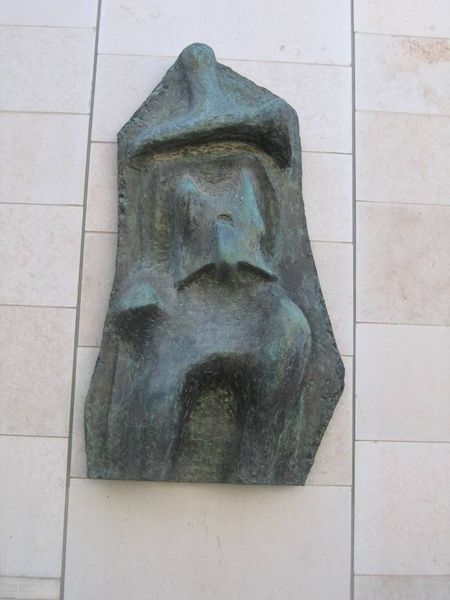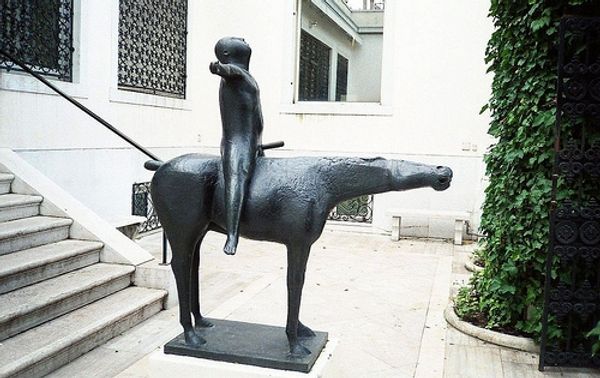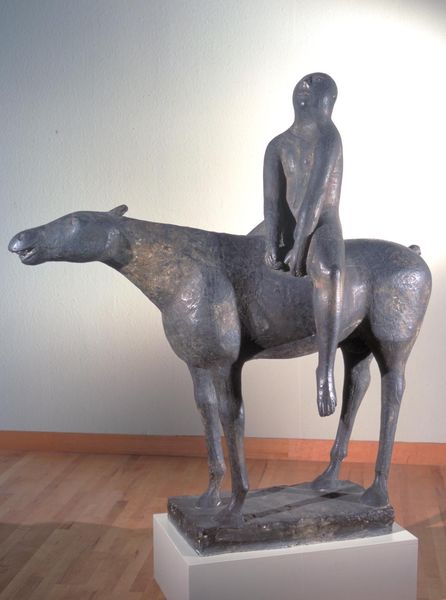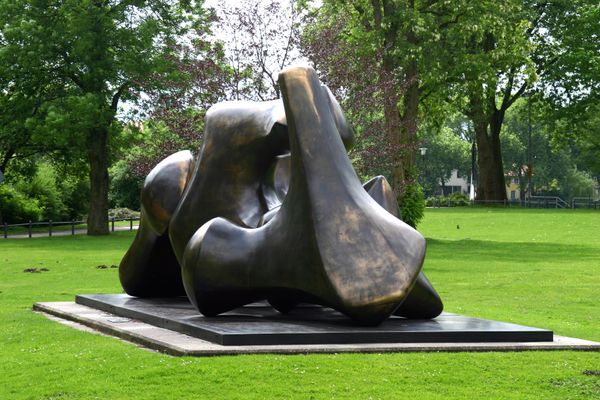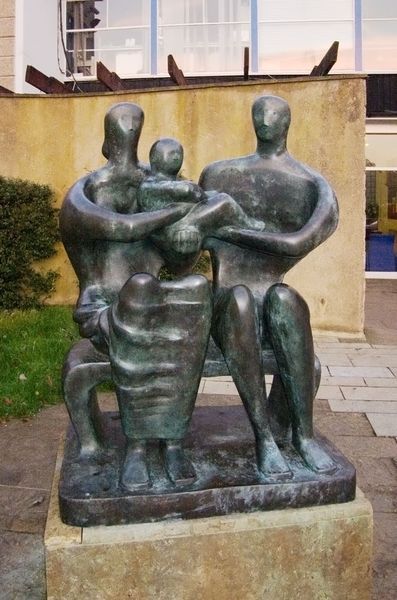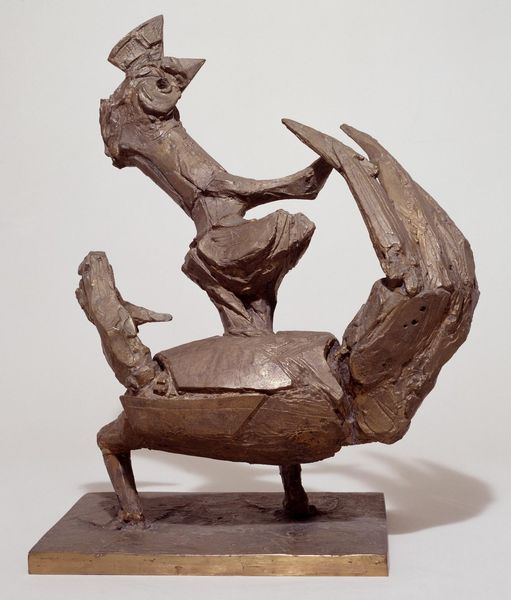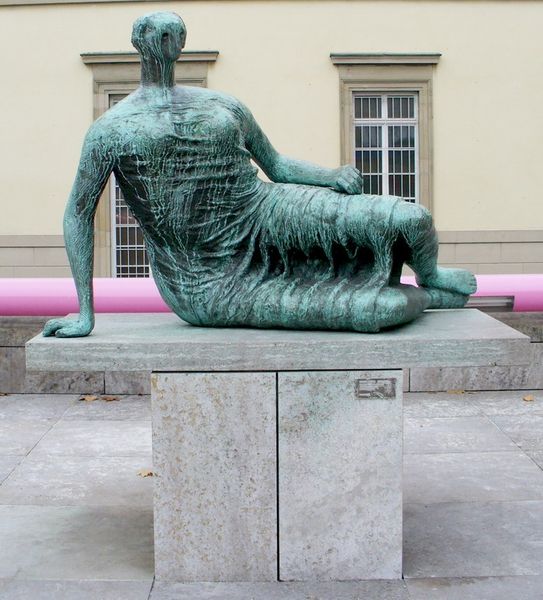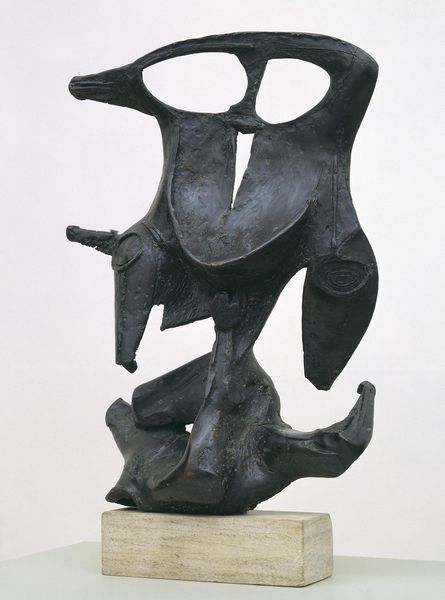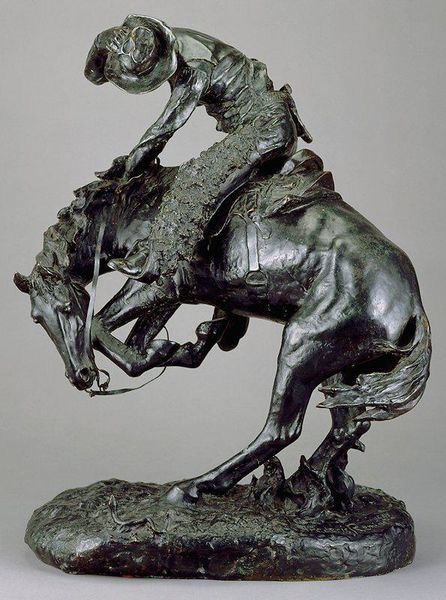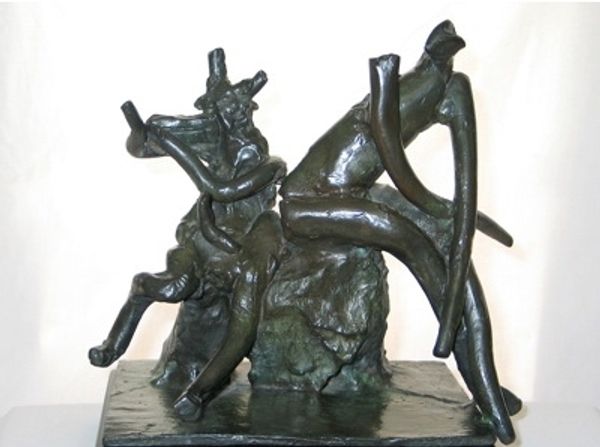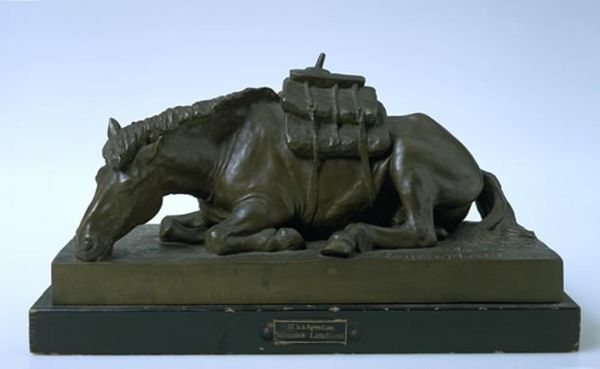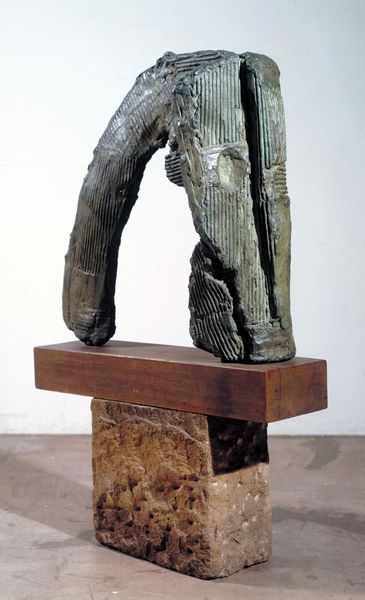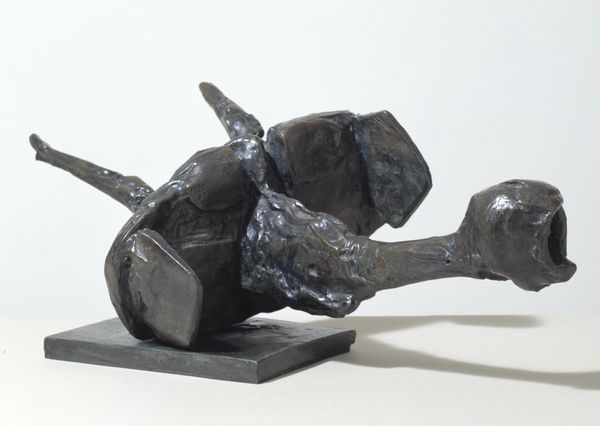
bronze, public-art, sculpture
#
public art
#
sculpture
#
street art
#
bronze
#
public-art
#
figuration
#
sculpture
#
modernism
Copyright: Marino Marini,Fair Use
Curator: Let’s spend some time with Marino Marini’s bronze sculpture, "Miracolo," created in 1960. It's quite imposing, isn't it? Editor: It really is. It looks... fractured. Almost violently so. The horse seems to be collapsing beneath the rider, the forms simplified to the point of near-abstraction, but it's still clearly representational. I immediately feel a sense of tension, of struggle. Curator: I think you've nailed the emotional heart of it. Marini often explored the relationship between man and nature, often depicting a horse and rider. Here though, it feels as if their equilibrium is truly disrupted. Perhaps a reflection of the anxieties of the 20th century. Editor: Absolutely. You know, the way Marini has worked the bronze is also fascinating. See the rough texture? The surface looks almost deliberately unfinished, highlighting the materiality itself. I’m always drawn to how much the method informs meaning. Do you think that was deliberate? Curator: Absolutely deliberate. This ruggedness prevents any sense of idealization. I see this pairing more as a physical manifestation of unease and how the rapid advancements in technology have impacted that pairing. There's an underlying vulnerability, a questioning of man's control over his environment. Almost like they are two bodies of one entity. The sculpture could have easily been smooth and idealized to demonstrate man's control of nature, yet Marini takes a step back here, demonstrating the beauty of uncertainty. Editor: Yes, instead, he’s opted for bronze that feels like the earth it was born from, really rooting it back to reality. When you view it from the perspective of artistic labor, of forging this material, it feels symbolic, as if all the social unrest in the world is embedded in the artistic work. Almost as if there's the same effort needed in resolving tension both physically, like the art piece, and socially, among nations. Curator: And yet, it’s titled "Miracolo" – Miracle. It's intriguing, that juxtaposition of trauma and the possibility of something miraculous emerging from it. Maybe he’s saying there is something redeeming, that something powerful comes through such tension. Editor: Maybe so. A moment frozen in time, showing that things aren’t always what they seem. An interesting use of the sculpture, the materiality, and the technique of roughness to display deeper thought. Curator: Beautifully said. Thank you, yes, exactly my sentiments too. Let's move on to the next piece.
Comments
No comments
Be the first to comment and join the conversation on the ultimate creative platform.
